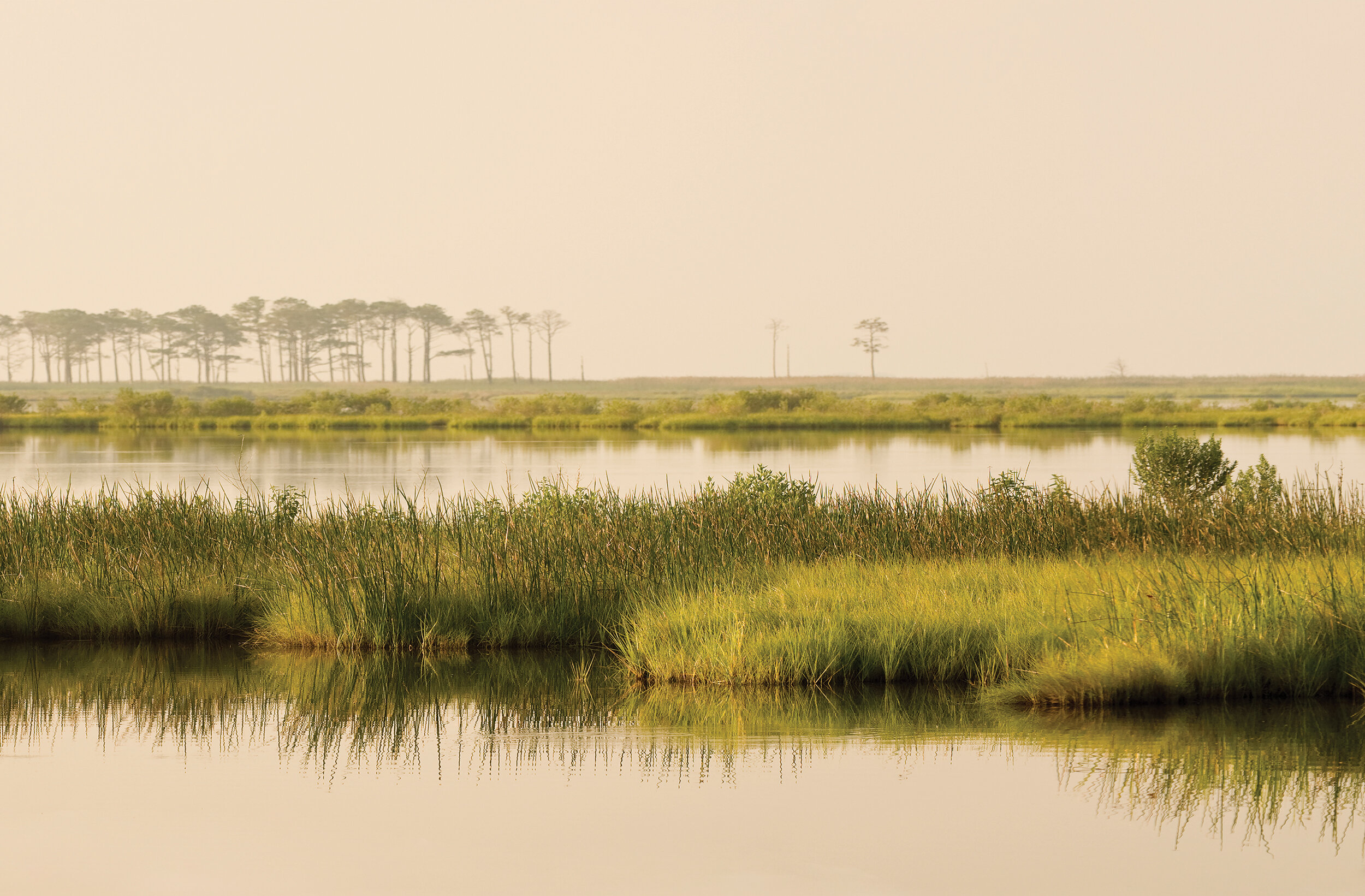
David Harp finds inspiration by exploring literal and figurative edges: shorelines, communities, habitats, and traditional work, where culture and nature connect, creating the essence of what defines the Chesapeake. Where Land and Water Meet represents 40 years of documentary images by Harp, whose naturalist’s eye provides an unparalleled perspective on the interdependence of communities, land, and water. His body of work represents a career spent immersed in the natural world, perfecting the art of observation.
Community, Not Commodity
“My early inspiration to photograph the people, flora and fauna of the Chesapeake Bay region came from a book by Aldo Leopold called A Sand County Almanac,” David Harp reflects. “Leopold wrote that land should be treated like a community of which we are a part rather than a commodity that we buy and sell.” The interdependence of culture and place is nowhere more evident than on the shorelines of the Bay, the edges where land and water meet, and where culture and place come together.
Navigating that edge, the nexus of watermen’s daily lives and climate science, is an important and challenging aspect of Harp’s work. Honoring differing perspectives, documenting changes to the environment, and continuing to learn from leading regional scientists and naturalists, remain his mission. “We have to make choices in the next 10 years that are going to be difficult… We have to learn to live a little bit differently, maybe a lot differently,” Harp says. “But I don’t think I could be doing what I’m doing without some optimism.
Being There
It takes an innate passion to rise before dawn, don hip boots and outdoor gear, and haul a kayak into a marsh gut to spend hours in the company of swarms of mosquitoes. Yet, David Harp’s best, most productive days, start that way. “I love being in the marsh when the sun comes up and the dew is on the grasses. It’s a religious experience for me,” he reflects.
It is a simplistic truth that in order to capture the Chesapeake’s ever changing landscape and light, you have to practice “being there,” as Harp is fond of saying, but there is much more to his aphorism. He recognizes that you can visit the same place dozens of times, and still have a unique experience, see something special, notice what is different. As his friend and collaborator, Tom Horton, has written of Harp: “He knows…how fog-blottered light coaxes colors from the drabbest salt-marsh, and what favors that pearly, luminous-gray light you get some days on the Bay does to white objects like swans and watermen’s boats.”
“Being there” is why, even after some 50 years photographing the Chesapeake region, Harp’s images consistently surprise, enchant, and instruct us, communicating new stories and retelling familiar ones in unique ways.
The Art of Observation
The words of master documentary photographer Elliott Erwitt have long inspired David Harp: “Photography is an art of observation. It has little to do with the things you see and everything to do with the way you see them.” For Harp, framing a photograph takes precedence over equipment—the camera becoming a tool, a means to the end. When he teaches photography, Harp emphasizes four progressive actions required to compose a strong image: look, see, observe, and discriminate. Once perfected, “the camera disappears, you’re looking at the viewfinder, that’s your universe, that’s the four walls of your vision at the time.”
Beyond technique, Harp understands that the emotional and intellectual lenses through which photographers approach a subject create dramatically different portrayals. “Three or four photographers standing shoulder to shoulder—I’ve seen this happen—they shoot the same scene and it’s totally different or subtly different at least. It’s amazing.”
Despite his dedication to the craft, Harp has never considered himself an art photographer, but rather a journalist, at heart. In both his independent and collaborative work, Harp embraces process, the planning and editing required to create a narrative. “To me, it’s all about story.”
Two Weeks With the Skipjacks
In early 1976, David Harp spent two damp, gray weeks photographing the skipjack fleet out of Cambridge and Tilghman Island, a personal documentary project he felt passionate about. “Skipjacks were the icons for Maryland tourism,” he recalled, but he craved a more intimate experience than the skipjack race shoots he had been on during Chesapeake Appreciation Days. Emerson Todd, captain of Rebecca T. Ruark, warned him: “Well, you know it’s gonna be cold. And it’s dark when we leave and dark when we come back.”
Shooting on Tri-X film using his Nikon F camera, Harp captured the personality and character of the crew members in the dramatic, moody winter light. He observed the close and seamless working relationship of the captain, and white and Black crew members, who eventually seemed to forget they were the subject of his photographs.
The 1970s project is a poignant snapshot in time. “What I didn’t realize at the time is that it was the end of the sail era in skipjacks… it wasn’t many years after that in the ’80s really, that it was almost over.” Unsure how to market these photographs, Harp sold a few to Popular Photography magazine, and the remainder sat on a shelf for decades, until they were digitized for this exhibition.
Cinematographic Collaborations
Since 2015, David Harp and Tom Horton have expanded their collaboration to include work with filmmaker Sandy Cannon-Brown, another partnership where “the whole is greater than the sum of its parts.” Cannon-Brown is an experienced filmmaker and editor, Horton serves as writer and narrator, and Harp is cinematographer. Together, they have produced five documentaries, produced by Bay Journal: Beautiful Swimmers Revisited (2016), High Tide in Dorchester (2017), An Island Out of Time (2018), Nassawango Legacy (2019), and Saving San Domingo (2020), with a new release, Thinking Like a Watershed (working title), anticipated in 2021.





